Now is the time to go looking for blackberries. They are just coming into season with a few tart black ones and many pink to red berries aripening. Even when very sweet wild blackberries have a bitter note or aftertaste. That comes from the center, which stays with the blackberry when picked. That also gives it more shelf-life. Raspberry, in the same genus, leave the core behind when picked which is why they are sweeter and go bad quicker. If you have enough large blackberry shoots they can be peeled, boiled and eaten. The roots can produce a bit of sugar. Beside the fruit the most common use is the leaves for tea. It’s tasty and medicinal. Having foraged for them from Maine to Florida I think the farther north one goes the better the berry gets. To read more about the blackberry click here, and here.
Blackberries and Lemon Bacopa grow in two very different environments. Blackberries like it dry, Lemon Bacopa likes it wet. Yet you can find them close to each other if a hill slopes down to a lake. Thus after nibbling on the blackberries above I found some Lemon Bacopa at the base of the hill at shore’s edge. No where near as well known or as common as it’s genusmate Bacopa monnieri, it is actually the far better tasting of the two. It’s call Lemon Bacopa but tastes more like lime. Whether it has the same medicinal qualities as Bacopa monnieri is debatable. Some think so but the plants really are worlds apart in taste so personally I doubt it. One is exceptionally bitter, the other very citrusy. Lemon Bacopa makes a nice tea. To read about it go here.
The Surinam Cherry in my yard finally decided to fruit, about a month behind schedule. Nearly two months ago there was fruit in Port Charlotte and a month ago in West Palm Beach. The weather has been different this year. In the 10 years or so that shrub’s been bearing this is the latest that I recall. However, it is also probably producing the largest crop ever. The species is naturalized in warm areas of the world. In the picture to the left you can see the span of ripeness. The berries go from green to yellow to orange then red. The top one is not quite ripe. It needs to be a deep red with blue tones, like the color of old-fashioned fire trucks, a blue red not an orange red. The best ones are the ones you have to fight the ants for. There are no in betweens with the fruit: You will either find the ripe fruit edible or not. You will also only eat an unripe fruit once. They do not taste good. Do not eat the seeds. Not only do they taste bad but enough of them will make you sick. To read more about the Surinam Cherry click here.
Tongue Depressors in the woods. Yes, tongue depressors. You’ll find something that looks that wood Popsicle on the Basswood Tree. It’s not wood but rather one bract of the flower. Blossoms are defined/arranged by their parts, from the outer most parts in, or the inner most out. Next out from flower petals are bracts (which can sometimes look like a petal as they do in the daylilies.) The Basswood has a bract that looks like a tongue depressor. If I remember correctly it is the only tree in North America to do that so identification when blossoming is quite easy. The tree is quite edible, actually most of it at one time or another from spring fresh leaves to inner bark. You can read more about the Basswood here.
Recently Added Article: Garlic Mustard. Also don’t forgt to check out my class schedule here. I’ve added three new locations.
Lastly, a city park I teach in often sprayed herbicides on its lake shore on Earth Day. How enlightened of them. When asked why the answer was to “make it look more aesthetically pleasing.” More aesthetically pleasing? To whom? To the birds who lost their nesting ground? To the animals that lost their shelter? How about the fish that have no where to hide or raise little ones? Maybe it is more aesthetically pleasing to suburbanites who like putting green lawns but that is a perverted view of reality. Looking more “aesthetically pleasing” is why here in Florida you see residential lakes that have decapitated grass to the shore line and then water but literally no other plants. Just naked lawn and dead lakes. It makes home owner associations proud: The only good nature is sterile and coiffured. Wild Mother Nature? Banish the thought. In times of budget cuts and sensitivity to environmental issues one would think governmental agencies would stop wasting tax dollars on toxins that kill plants… if not animals and us.

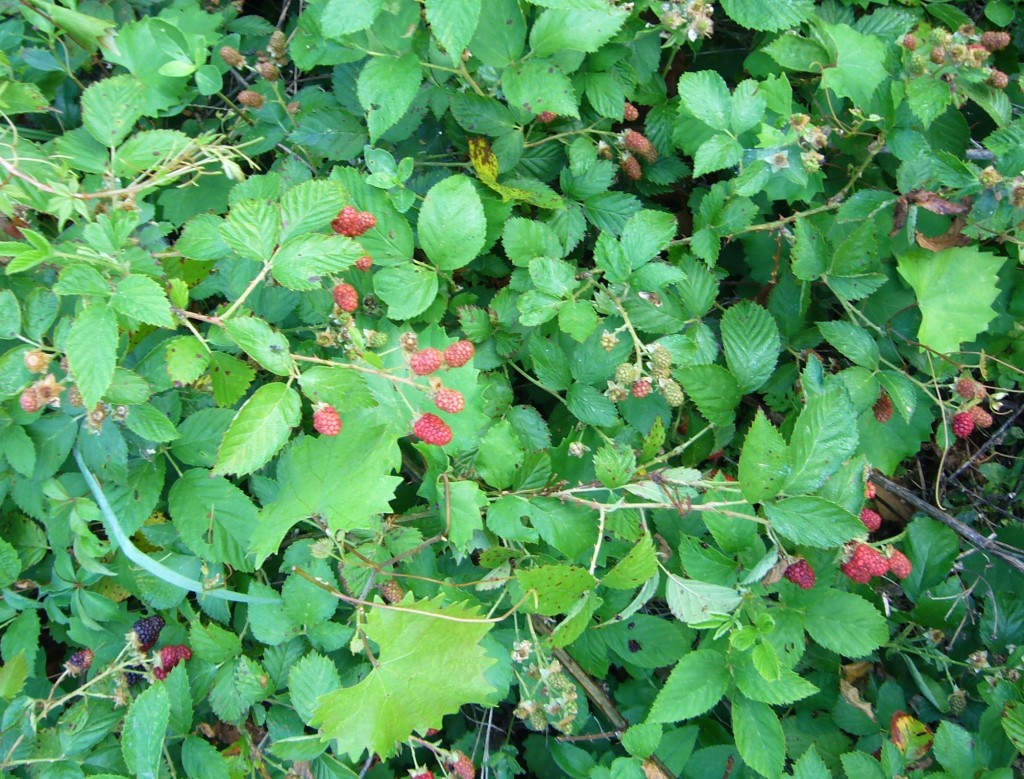
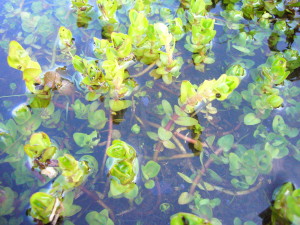
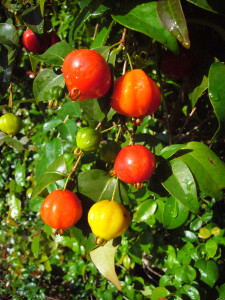
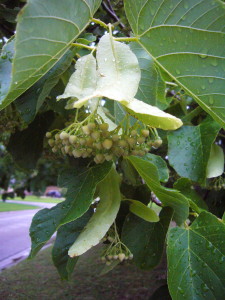
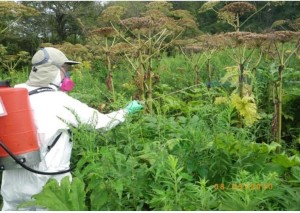

Yeay! I cant wait to try some blackberry Leaf tea! Are the leaves still just as medicinal when the berries are ready or did the plant put all its energy into the berrie?
Good leaves can be used anytime.
My company’s pest control guy told me we had blackberries in our front shrubs. So we picked and ate them all in the 3rd week of April. I guess Jacksonville, FL must have had cold enough weather for them to have come to fruition so early. Almost all of them were very sweet.
I enjoyed your article. Thanks for the education.
Patty
Patty- those were probably dewberries, the relative of the blackberries. I’ve also been eating dewberries like crazy just west of you in Tallahassee for 2-3 weeks now, but the true blackberries are just beginning to put on fruit with barely any ripe ones yet.
I guess I’m ahead of my time by not mowing my lawn…or caring that my yard is becoming invaded by Spanish needles, wire weed, and Poor Man’s Pepper grass.
🙂
As members of the cane berry family blackberries grow on long thick canes standing upright above the ground. What most of us in the south are calling blackberries are actually dew berries which grow on ground-hugging vines and you have to stoop over to pick them. Blackberries usually ripen a little later than dew berries and to me they are a little easier pickings because of their heighth. We have both varieties but the blackberries generally seem to like a little higher, dryer soil. Blackberries talso end to be a little larger and sweeter than the dewberries. Good picking to all.
Perhaps the Commissioners or City Managers of the municipality with the “enlightened” park could be persuaded by polite calls, emails or letters to abandon the environmentally unconscious practice of herbicide use, and instead adopt more environmentally friendly landscape practices (manual removal; trimming, etc.).
Perhaps the town authorities could better understand the public’s desire to cultivate a “Florida Friendly” landscape that preserves both wildlife habitat and sufficient views for human patrons and eco-tourists (who would be turned-off by this town’s callous pollution of the shared environment.
I’m sure MANY of your email subscribers would be happy to sign an e-petition (like those from Change.org), and perhaps the local Native Plant Society or IFAS extention Florida Yards & Neighborhoods staff would be delighted to offer advice / direction to the public works or park maintenance department and staff regarding non-toxic Florida Friendly Landscape design and maintenance.
The “Green-ing” of the park could be a great public relations story for the town in question. It could be a win-win, for the wildlife, the park patrons, AND the Local Government and Chamber of Commerce.
Every crisis is an opportunity! Send your subscribers a petition link or sign-on letter to the Local governors (Mayer, city manager, parks department managers, commissioners, etc.), of the municipality in question and we’ll be happy to add our names to your polite message or petition of “encouragement.” Perhaps the environmental reporter of the local newspaper would be likewise happy to cover this grassroots campaign to get the city parks department to go Green!
We have blackberries ripening here in Lake County (Florida) in the middle of our formerly wet marsh (now dry). I am afraid the birds will get them first. They are not as fussy as I about the ripeness of the berry. Red suits some of them just fine.
Dean: I read somewhere -was it here?- that the Spiderwort is 100 per cent edible. Is that so?
The above ground parts are edible.
All is well and scientific about what has been raised on “sprayed herbicides…”. On Earth’s Day , it would have been better for people at least to remember the “Silent Spring” of Rachel Garson. As children, whenever we were asked to draw a natural sight, the result from almost all of us a scenery including various forms of plants and animaks with butterflies and birds over trees and weeds on a lake shore with some mountains on the horizon. Personally, I’m sensitive towards spraying whatever the kind of material sprayed as this acts at the expense of the fresh oxygen we breathe. A chance to get aggravated with my wife is when she empties a full big “pif paf” container on seeing a single cocroach, killing ourselves as well. I always remember the story of the friendly bear which hurled a boulder at its master’s face for the sake of keeping away a fly. Indeed govermental agencies should be aware of the near and far future adverse consequences on the environment and not to be under restraint of companies directly or indirectlly concerned with herbicides.
Thanks for another great newsletter. The info about basswoods was appreciated.. and the spraying bit, another reason to detest bureaucrats, is always welcome 🙂
It is amazing how unenlightened the city “gardeners” are when it comes to herbicides and fertilizers etc. I share your anger and dismay, Deane.
I truly enjoy each and every newsletter, not to mention your video’s and website. You sure are fully invested in providing us with a quality education.
Many thanks